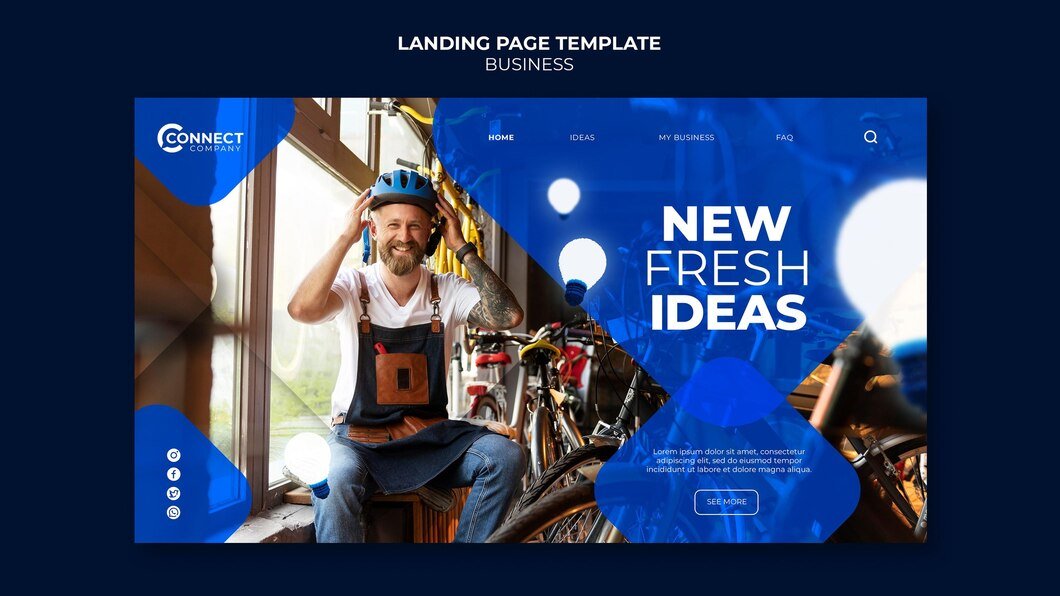Introduction
In the competitive world of fitness websites, optimizing for SEO and ensuring an exceptional user experience are paramount. This comprehensive guide provides you with the essential strategies to elevate your fitness website’s visibility and user engagement.
Understanding the Importance of SEO in Fitness Websites
Search Engine Optimization (SEO) is the cornerstone of digital marketing for fitness websites. Effective SEO ensures your site ranks higher in search engine results, driving organic traffic and increasing conversions. Here, we delve into key aspects of SEO that can significantly impact your fitness website’s performance.
1. Conduct Thorough Keyword Research
Keywords are the foundation of SEO. For a fitness website, identifying the right keywords is crucial. Use tools like Google Keyword Planner, SEMrush, or Ahrefs to find high-volume, low-competition keywords relevant to your niche. Focus on long-tail keywords such as “best workouts for beginners” or “yoga for weight loss” to target specific audiences.
2. Optimize On-Page SEO
On-page SEO involves optimizing individual pages on your website to rank higher and earn more relevant traffic. Key elements include:
- Title Tags and Meta Descriptions: Craft compelling and keyword-rich title tags and meta descriptions. These are the first things users see on search engine results pages (SERPs).
- Header Tags (H1, H2, H3): Use header tags to structure your content. Incorporate primary keywords in your H1 tag and secondary keywords in H2 and H3 tags.
- Content Quality: Ensure your content is original, informative, and engaging. Use bold keywords to highlight essential terms and phrases.
- Image Optimization: Use alt tags with relevant keywords for all images. Compress images to improve loading times without compromising quality.
3. Implement Technical SEO
Technical SEO involves optimizing your website for crawling and indexing by search engines. Important aspects include:
- Mobile-Friendly Design: With the rise of mobile users, ensure your website is responsive and offers a seamless experience on all devices.
- Site Speed: Page load speed is a critical ranking factor. Use tools like Google PageSpeed Insights to identify and fix issues slowing down your site.
- XML Sitemap: Create and submit an XML sitemap to search engines to help them understand the structure of your site.
- HTTPS: Secure your site with HTTPS to protect user data and improve rankings.
4. Build High-Quality Backlinks
Backlinks from reputable sites signal to search engines that your content is valuable and trustworthy. Strategies to build backlinks include:
- Guest Blogging: Write guest posts for authoritative fitness blogs and include links back to your site.
- Influencer Collaborations: Partner with fitness influencers to create content that links to your website.
- Content Sharing: Share your content on social media and fitness forums to increase visibility and attract backlinks.
Enhancing User Experience on Your Fitness Website
User experience (UX) is crucial for retaining visitors and encouraging conversions. A well-designed website keeps users engaged and reduces bounce rates. Here are key strategies to enhance UX:
1. Intuitive Navigation
Ensure your website has a clear and logical structure. Use a well-organized menu and intuitive navigation to help users find the information they need quickly. Implement breadcrumb navigation to aid user journey tracking.
2. Engaging and Interactive Content
Create content that resonates with your audience. Use a mix of text, images, videos, and infographics to keep users engaged. Consider implementing:
- Workout Videos: Offer high-quality workout videos with detailed instructions.
- Interactive Tools: Use tools like BMI calculators, fitness trackers, and meal planners.
- User-Generated Content: Encourage users to share their fitness journeys and success stories.
3. Fast Load Times
Users expect fast-loading websites. Compress images, use caching, and leverage Content Delivery Networks (CDNs) to improve load times. Regularly monitor your site’s performance and optimize as needed.
4. Mobile Optimization
With a significant portion of traffic coming from mobile devices, ensure your website is mobile-friendly. Use responsive design principles to provide a seamless experience across all devices.
5. Clear Call-to-Actions (CTAs)
CTAs guide users towards desired actions. Use clear and compelling CTAs throughout your site to encourage sign-ups, downloads, or purchases. Ensure CTAs stand out visually and are placed strategically.
Leveraging Analytics for Continuous Improvement
Regularly analyze your website’s performance to identify areas for improvement. Use tools like Google Analytics to track key metrics such as:
- Traffic Sources: Understand where your traffic is coming from and focus on high-performing channels.
- User Behavior: Analyze how users interact with your site, including bounce rates and average session duration.
- Conversion Rates: Track conversions to measure the effectiveness of your CTAs and marketing campaigns.
Staying Updated with SEO and UX Trends
The digital landscape is constantly evolving. Stay updated with the latest SEO and UX trends to ensure your website remains competitive. Follow industry blogs, attend webinars, and participate in online communities to stay informed.
Conclusion
Optimizing your fitness website for SEO and user experience requires a comprehensive approach. By implementing the strategies outlined above, you can improve your site’s visibility, attract more organic traffic, and provide a superior user experience.













